Contextual Application of Large-Scale Educational Initiatives Report
VerifiedAdded on 2022/10/19
|8
|690
|187
Report
AI Summary
This report provides a detailed analysis of the application of large-scale educational initiatives within a learning environment, specifically focusing on the Higher Education Standards Framework (HESF) and its second domain concerning the learning environment. The report identifies the problem of inclusivity in multicultural settings and examines how the HESF addresses issues such as facilities, diversity, student grievances, and wellbeing. It evaluates the suitability of the HESF for implementation, emphasizing its relevance to the identified context and its potential for improving inclusivity. The report outlines criteria for evaluating the initiative's success, including improvements in classroom inclusivity, the resolution of student issues, and the effectiveness of classroom resources. The analysis is supported by references to relevant research and frameworks, offering recommendations for practical application in educational settings. This report is designed to aid students in understanding the importance of inclusivity and how to apply educational frameworks in real-world situations.
1 out of 8
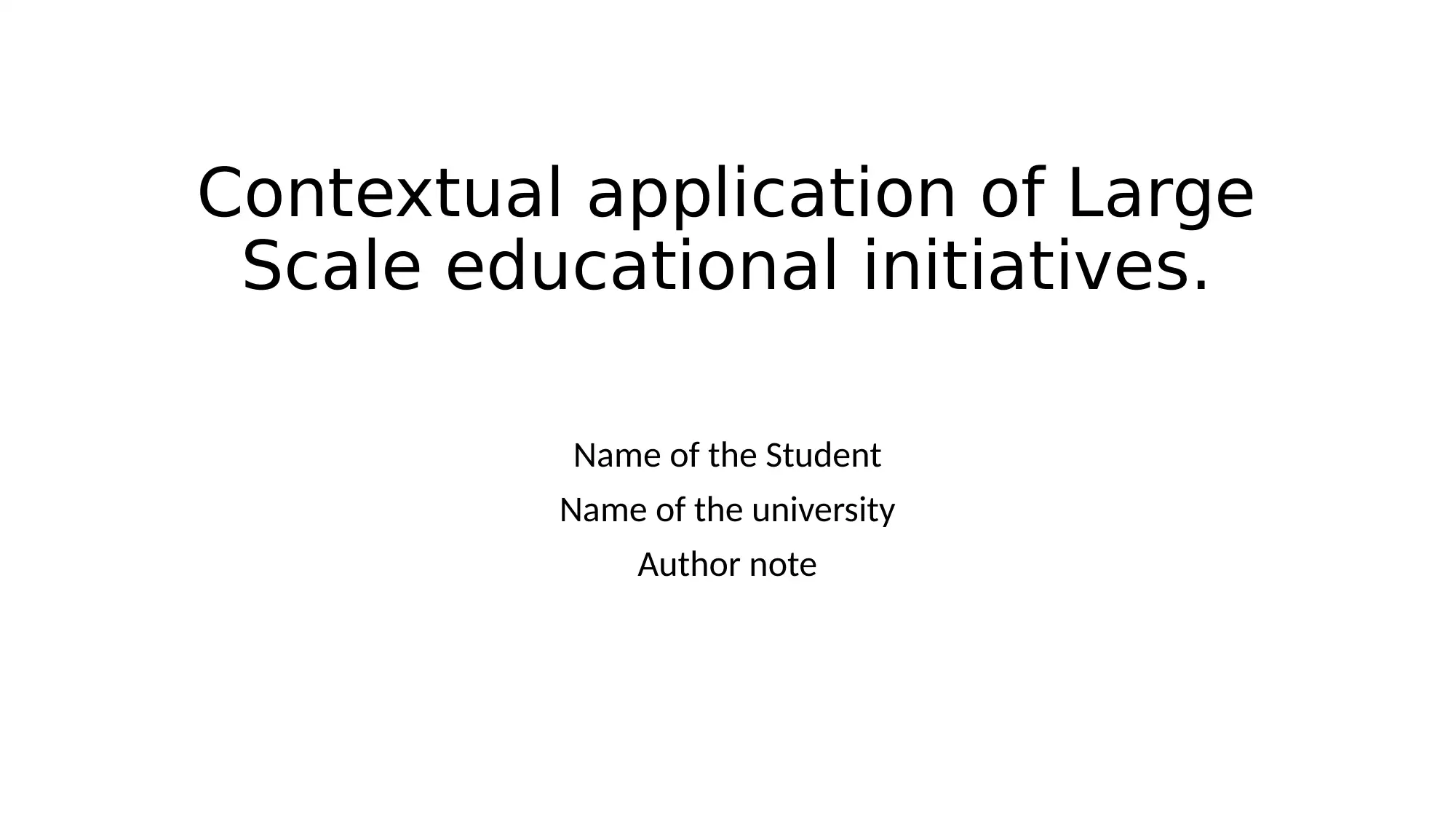
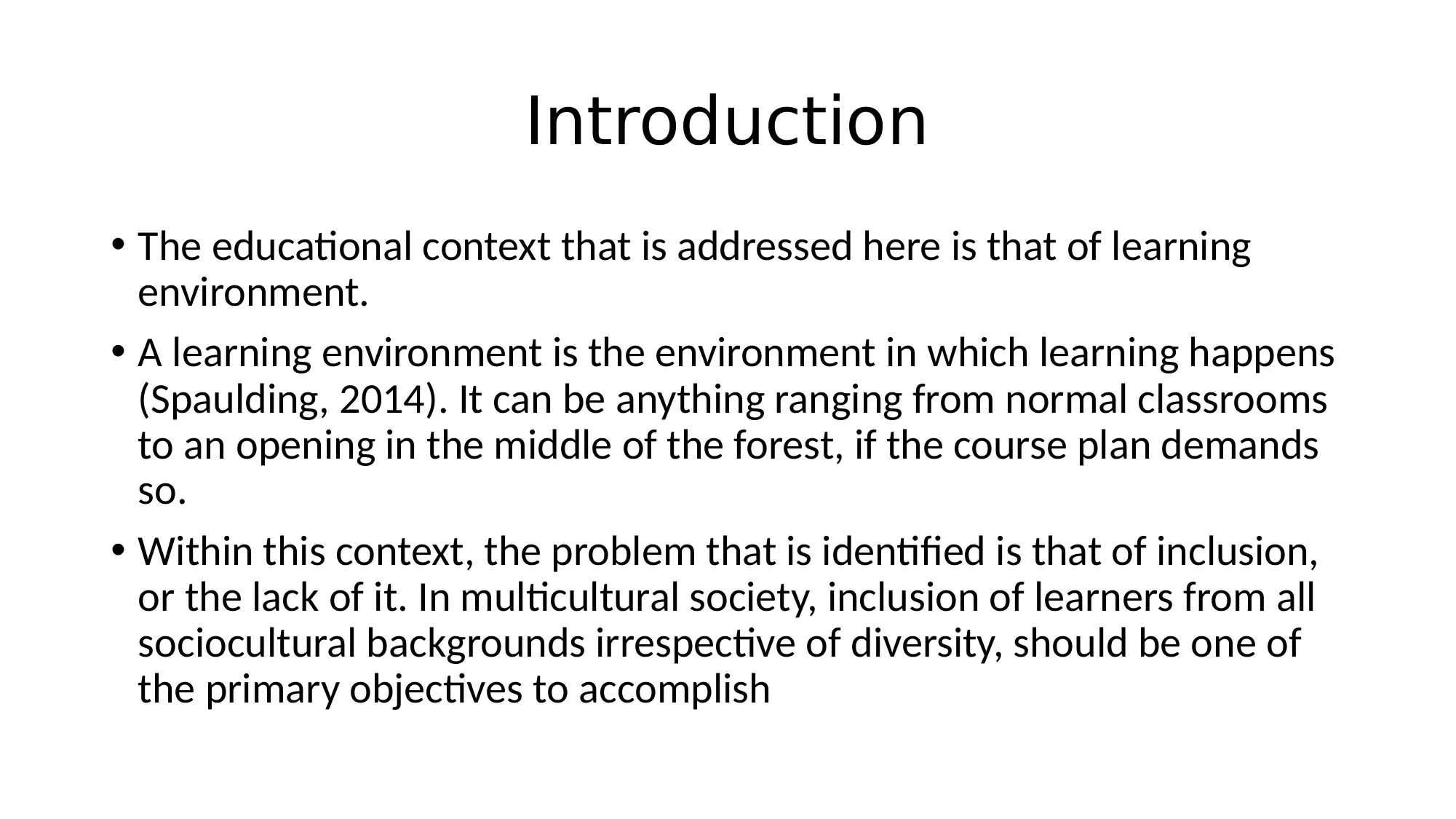
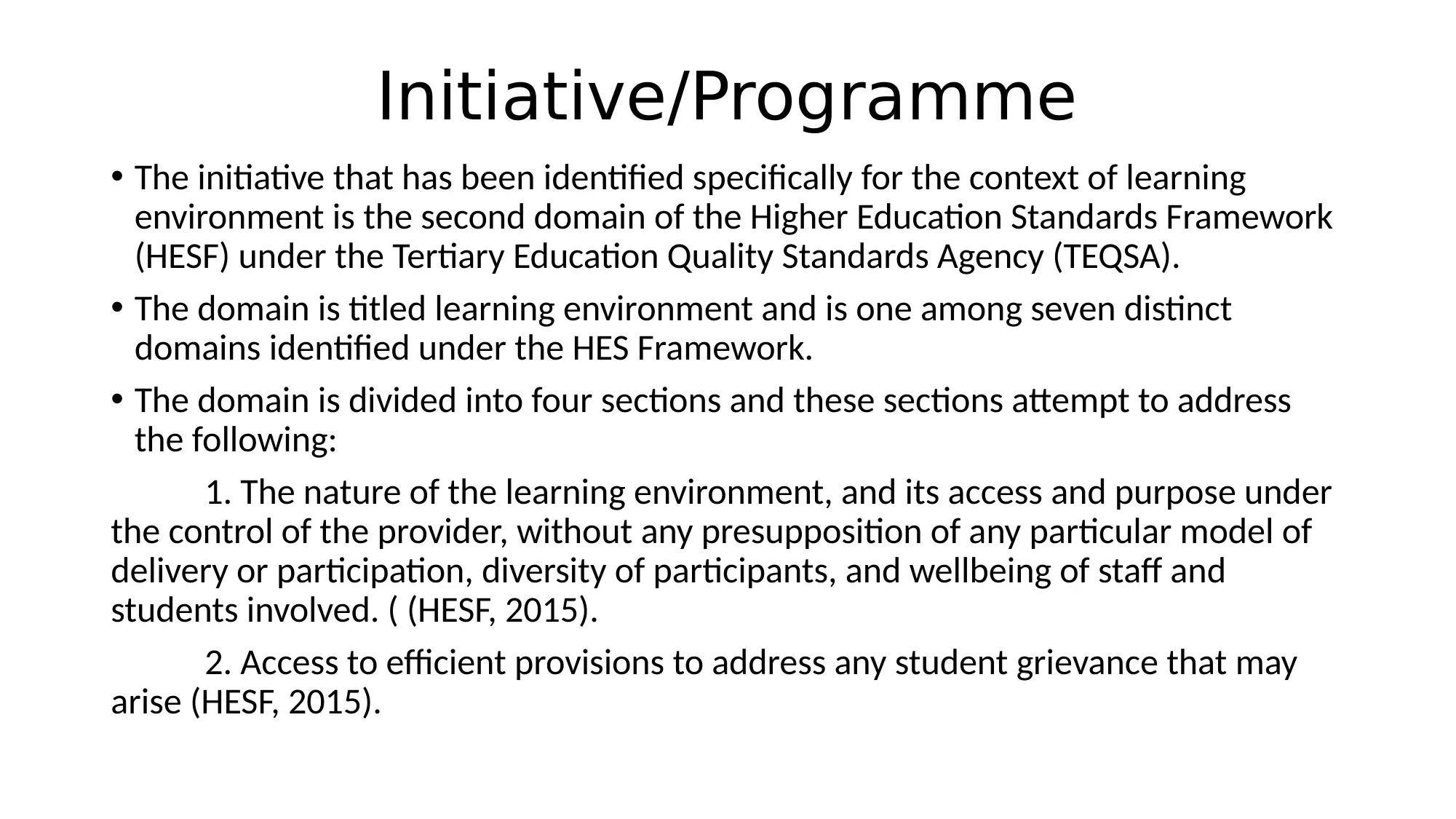

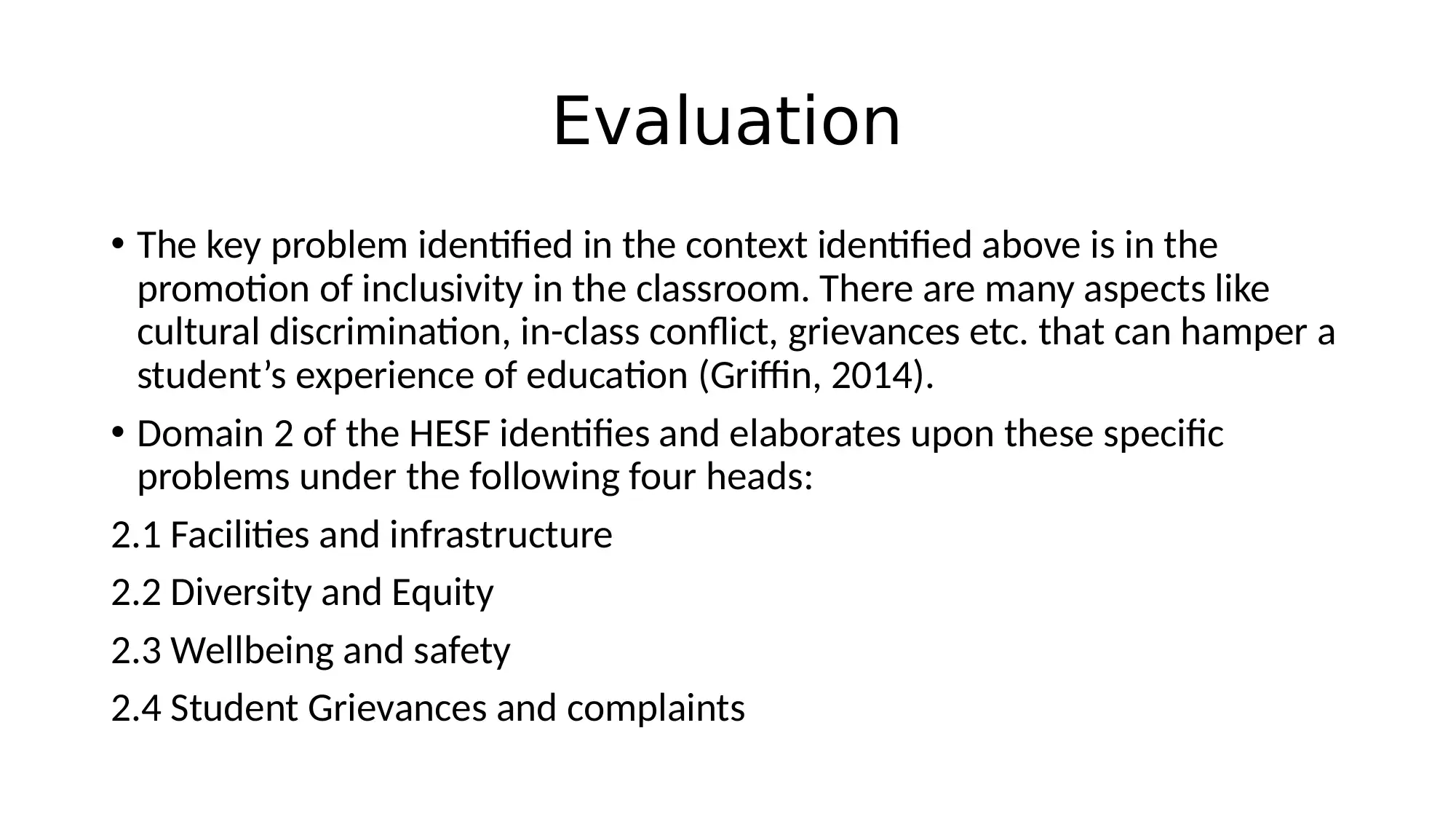
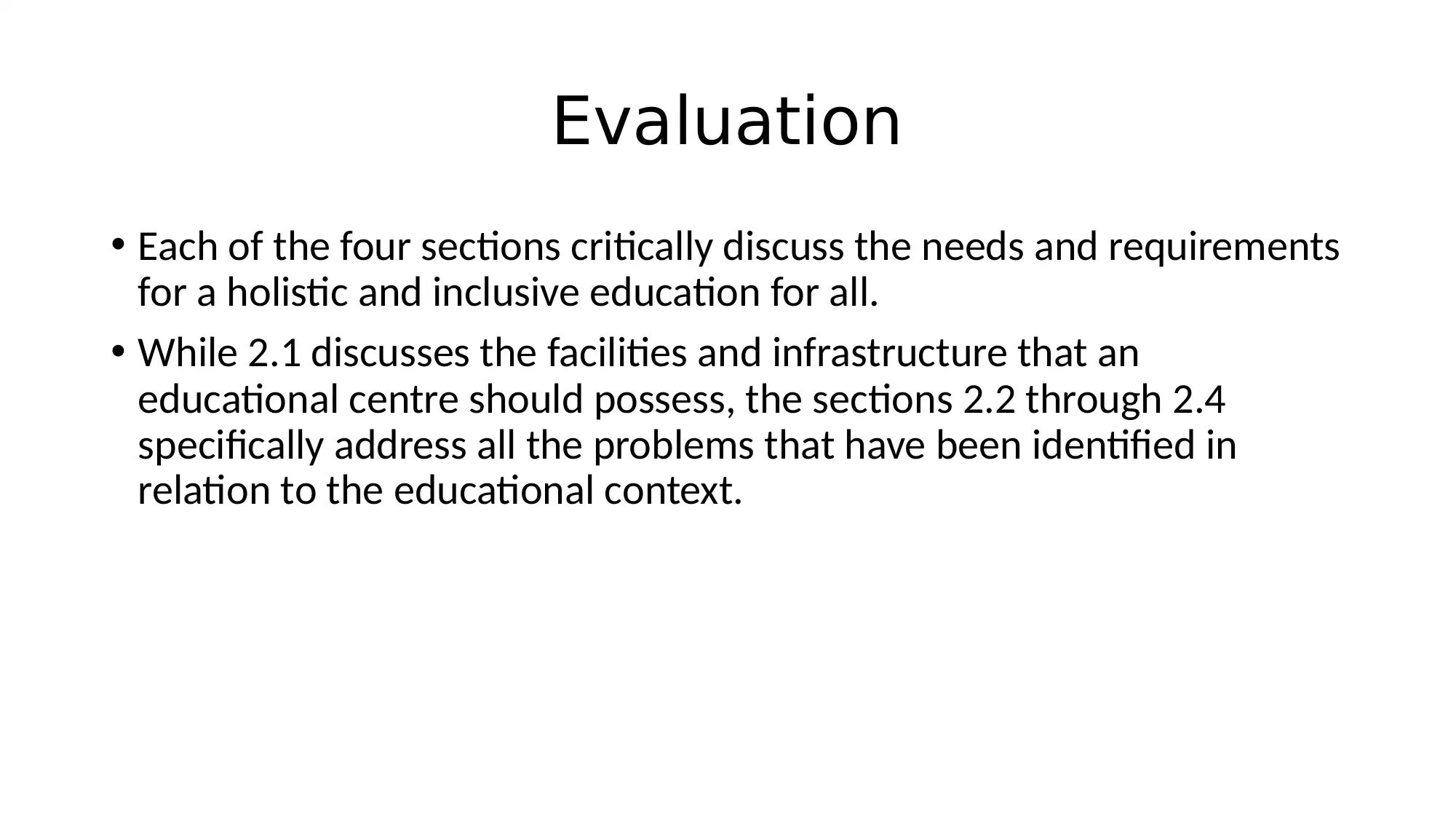
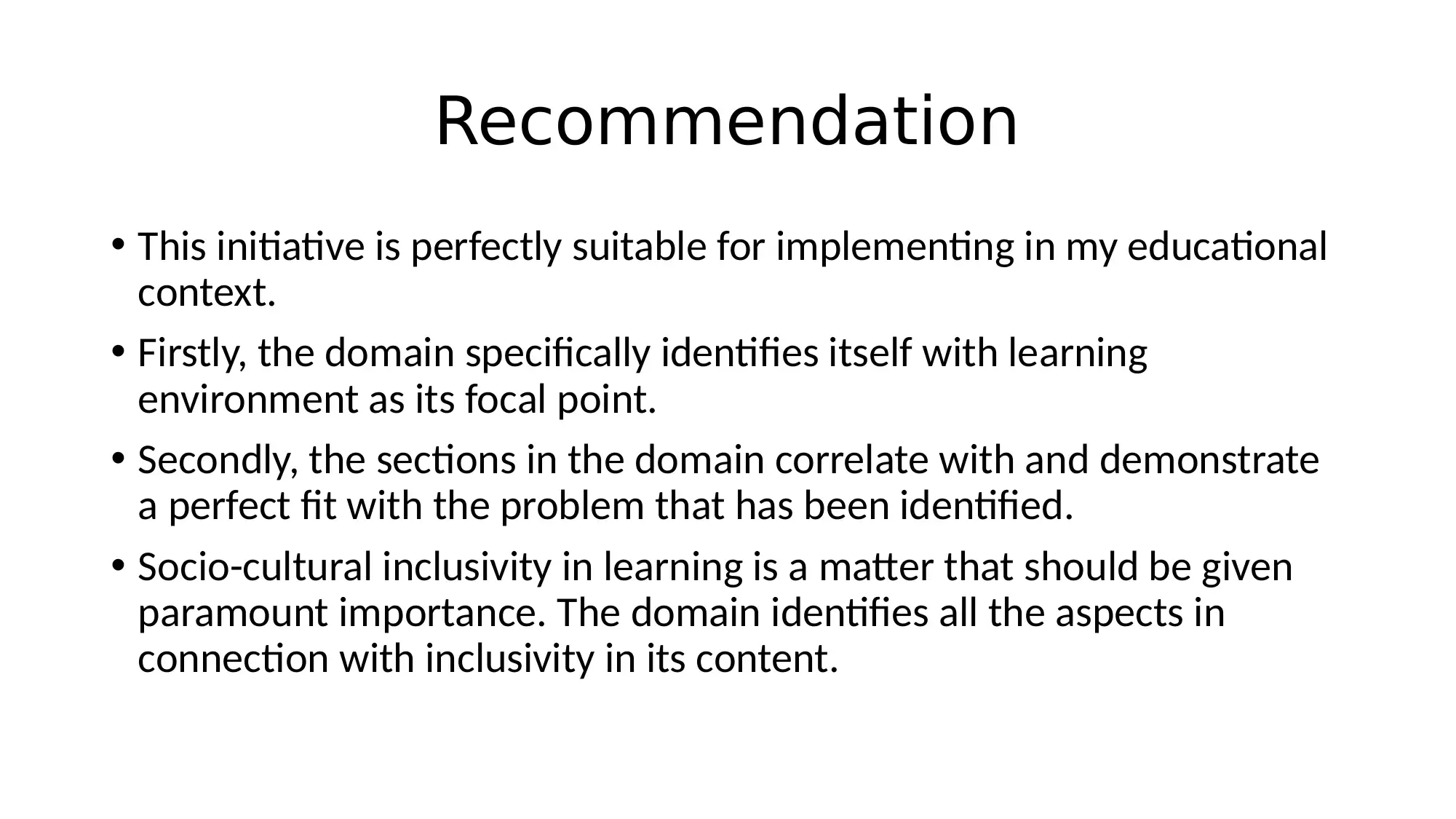
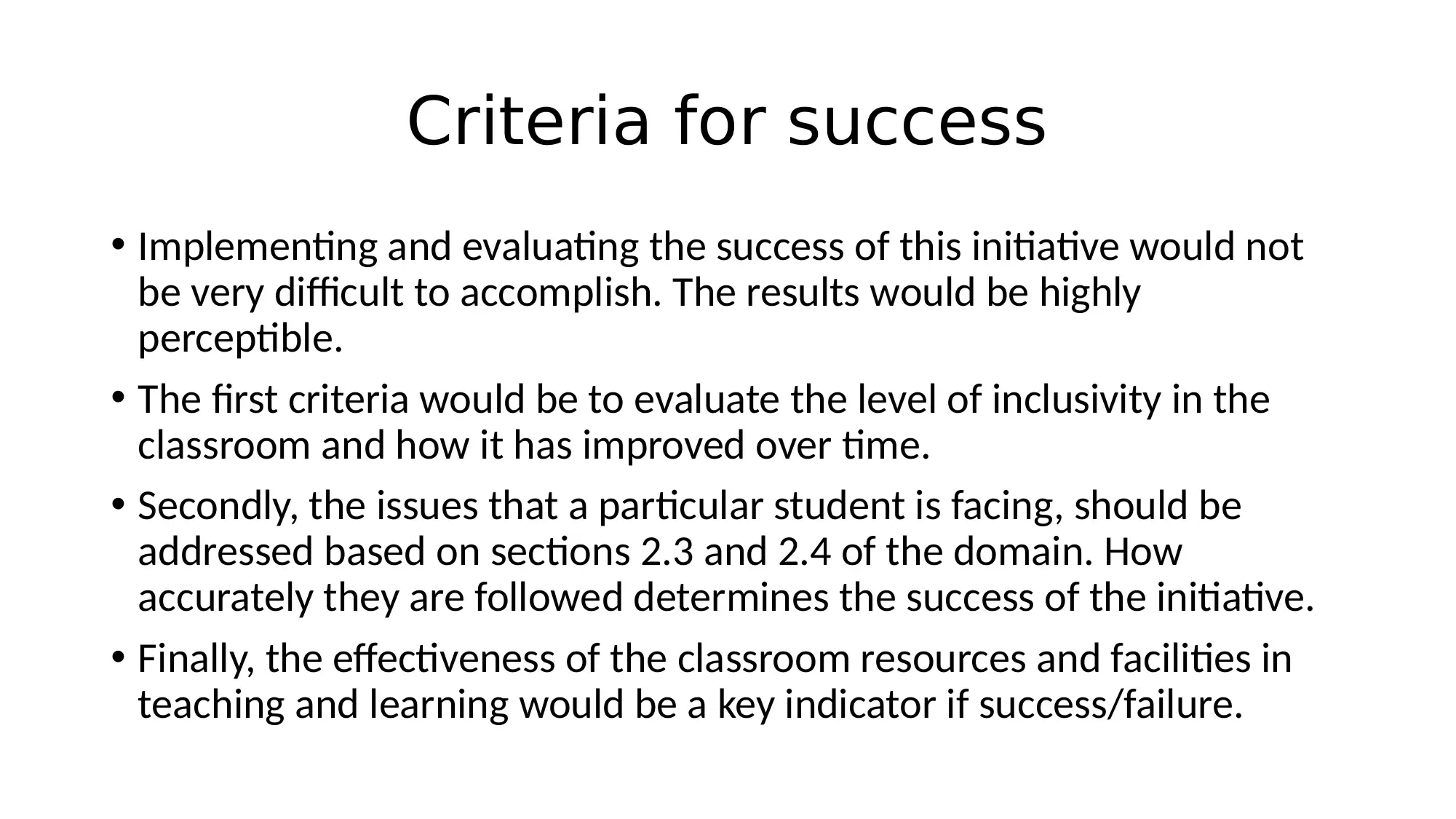
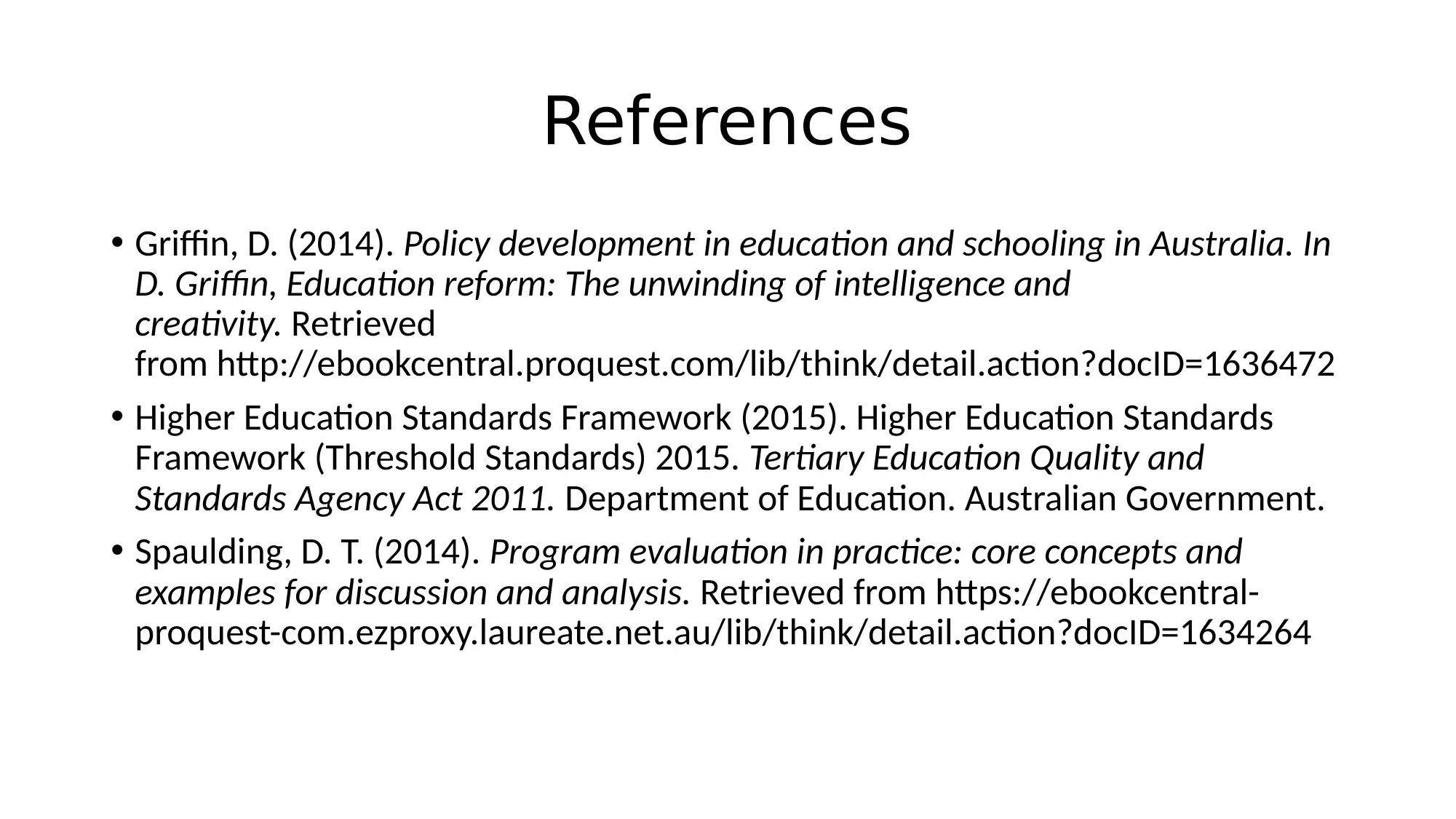




![[object Object]](/_next/static/media/star-bottom.7253800d.svg)